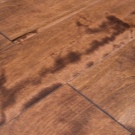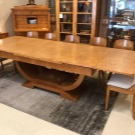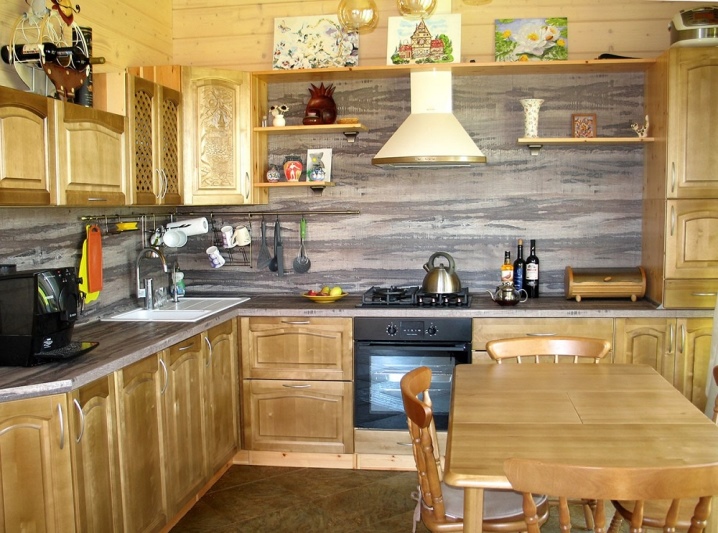Types and uses of birch boards

Birch is one of the most common tree species, widely used in the logging industry. This popularity is due not only to the impressive distribution of the biological species on the territory of Russia, but also to the numerous positive properties of the material obtained. However, birch boards cannot be considered universal, so let's examine all their features before buying.

Advantages and disadvantages
Any Russian seller offering a wide variety of sawn timber must also have birch boards in its assortment. Their obligatory presence in the price list is due to the high demand for such material, and the demand, in turn, is caused by the mass of advantages of this tree. Here are the main ones.
- Birch wood has a rather high hardness, yielding in this indicator only to the recognized leaders - beech and oak. Its surface is not prone to deformation even under significant stress, and it is certainly more reliable than inexpensive pine and related species.
- Birch is beautiful not only outside, but also inside. This tree is characterized by a pronounced uniformity of structure and a fresh, juicy color, which is associated with home comfort. In addition to its practical properties, such wood is of interest to designers and simply as a beautiful finishing material.
- Unlike many other breeds, fresh birch bends well and has the ability to maintain the acquired shape after drying. In view of this, it is very actively used in the manufacture of furniture, because such a workpiece does not need to be cut or sawed - without damaging the fibers, it takes on the desired shape.
- Working with birch planks is relatively easy - they are quite malleable and are recommended as an introductory material for beginners. You can also process them at home.
- With a huge number of described advantages, birch is not at all an expensive breed. - in view of the fact that in our country it grows everywhere, you can buy it quite inexpensively.

Unfortunately, birch boards are still not perfect, because otherwise they would simply be uncontested.... Such wood should not be used in a situation where some of its obvious shortcomings may be especially evident.
- Birch boards dry very slowly but at the first opportunity they absorb moisture from the atmospheric air. Constant contractions and expansions lead to the fact that the lumber cracks and quite quickly - alas, no impregnation can solve this problem. In view of this, birch boards are not used at all outside - this material is purely for internal use.
- Since the material itself constantly creates high humidity, it is not surprising that it is more prone to rotting than some of its competitors. If you "guess" to use birch in a place where there is already trouble with moisture, it will disappoint immediately and decisively.
- Due to the specific ratio of birch wood to moisture, it must be dried with the strictest adherence to technology. This can only be provided by those manufacturers who have been on the market for a long time and have a reputation for being responsible. It is highly undesirable to take wood from an unknown supplier - improperly dried boards are prone to cracking and arbitrary deformation.
Separately, it is worth noting that the most famous and expensive version of the aforementioned wood is Karelian birch lumber. It is not in vain that this variety is more expensive - in all practical characteristics it is better than the “usual” look, and even from an aesthetic point of view, it is ahead due to its pinkish shade and atypical texture.
The strength of the Karelian variety makes it an excellent building material.

Species overview
Almost all known types of lumber that can only be useful indoors are made from dry and planed birch wood. At the same time, since we are talking about boards, it is most correct to classify them into edged and unedged.



Trim
In terms of pruning, birch edged boards assume the same production process as a similar material from any other wood species. The key difference is observed in the drying process, because, as we remember, birch boards categorically do not want to give excess moisture. To reach a moisture content of 12%, which is considered ideal for a material, you will have to wait a week and a half at best, at worst this period can easily double... At the same time, Karelian birch wood is still close in status to elite varieties of wood - furniture and floor coverings of the highest quality are produced from it.






Floorboards from all types of birch have become widespread due to the recommendation to use them as sheathing for warm floors. At the same time, craftsmen usually evaluate such material not as "excellent", but on a solid four, and the reason for this is the tendency to deformation of the product in conditions of high humidity.



For the construction of a floor from a birch board, the lumber must first be sanded and then varnished. The best way of fastening is considered to be landing on self-tapping screws, which, in turn, are screwed to wooden logs. The advantage of edged birch planks is that, as a floor, it fits perfectly into both classic and modern design styles.

Unedged
Unedged birch boards are less common, due to the specifics of the material. The fact is that unedged lumber is most often used for decorative cladding of walls and ceilings, however, birch as such cannot be used either for outdoor decoration or for indoor decoration where there is high humidity. Thus, birch is irrelevant in baths and saunas - those rooms where the plank finish is, in fact, typical.


Applications
Despite the significant hardness of birch wood, boards from this species are quite easy to cut, so almost everything that can be made in a carpentry workshop is made of them.

Often, such wood is used for the production of various handicrafts of folk art, but only on the condition that the product is small in size or consists of many small parts - this way the probability of deformation decreases. For this reason, birch wood often becomes the raw material for assembling panels, but every detail must be carefully cut, carefully sanded and kept in hot oil for several hours.





Almost all domestic furniture of the middle class of value is produced from plywood based on birch wood, while the material is usually diluted with some other wood in order to at least slightly reduce the tendency of birch to rot.

Despite the scope of application, which seems to be relatively narrow due to the inadmissibility of contact with moisture, headsets in the form of walls, drawers, chests of drawers and doors, chairs and tables, steps of stairs and even kitchen sets are made from birch boards, which suggests not such fragility of birch.




Birch furniture is also highly valued for the reason that the wood of this tree, being the lightest among all its "colleagues", is perfectly adapted to adopt someone else's shade, thanks to which, through her efforts, they often imitate more expensive types of wood and it turns out much more natural than any chipboard and MDF.
Also, birch in one form or another is very intensively used for the production of floor coverings. It can be both classic edged boards, and parquet (including solid wood), and even laminate. Despite concerns about this type of wood, many experts note: the high-quality performance of the top layer allows you to count on a significant service life of the product.

Waste after trimming birch planks can be used for the production of a number of other materials. Birch is quite suitable for the production of wood pellets and cellulose, veneer and plywood, furniture boards and pyrolysis briquettes. Even round timber can be used to produce stakes, mine racks, various cage poles and horse carts. Recognizing the fragility of birch products of this type and being ready to replace them regularly, skis, axes and knife handles can also be made from birch.
In this video, you will discover the benefits of birch wood.













The comment was sent successfully.